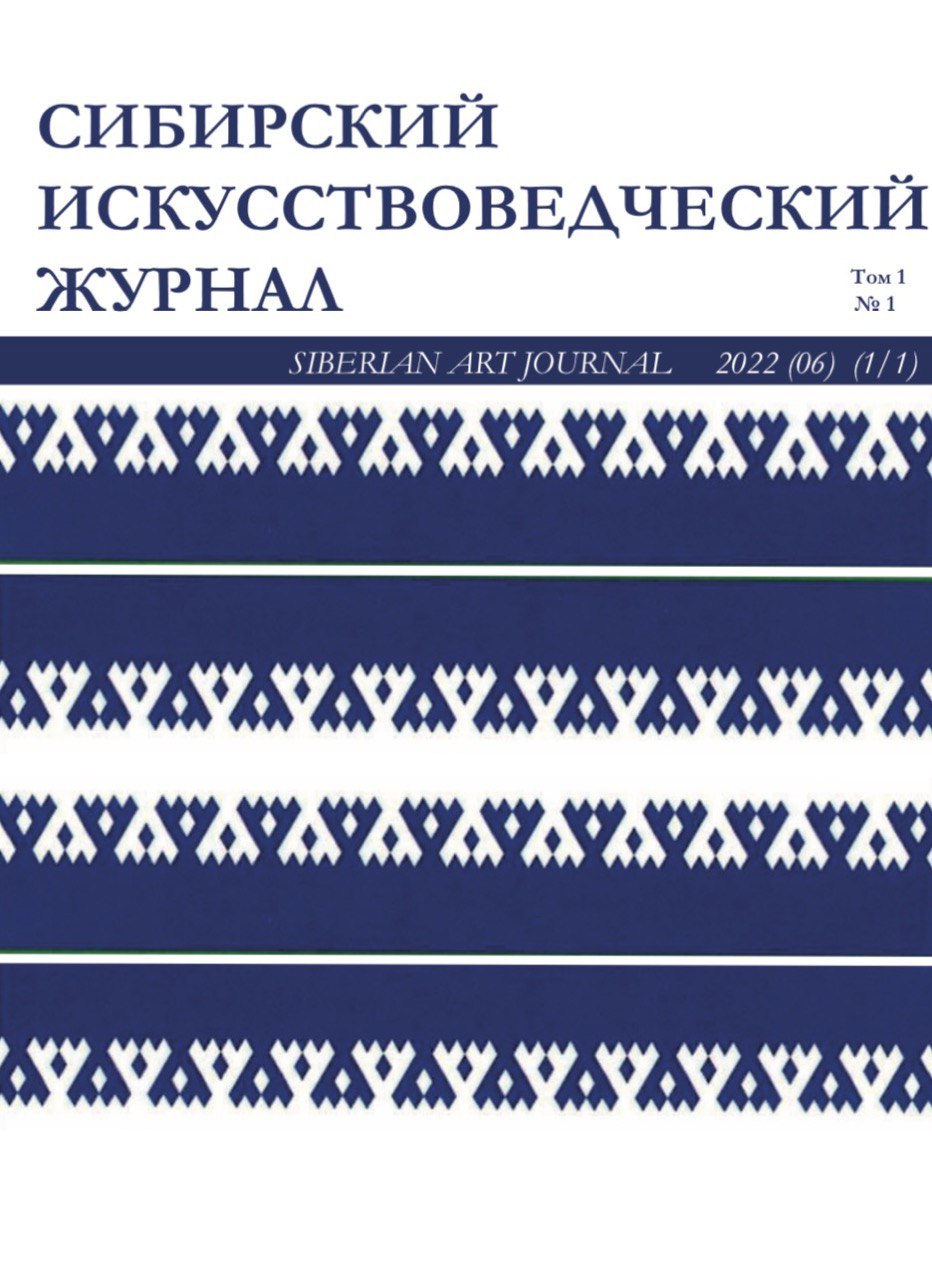from 01.01.2023 until now
Krasnoyarsk, Russian Federation
The article examines the most important stages in the development of the poster as an art form and as a means of expression, the main means of the poster language and continues the discussion about the representation of the indigenous peoples of the North in Soviet art. The first part of the article provides an overview of the development of the poster in Russia in the XIX-XX centuries. The second part of the article describes the history of the development of the image of the North in the Soviet poster of 1920-1960 and the representation of the indigenous peoples of the North. Soviet posters on the theme of the development of the North in the 1920s and 1960s represent the most important historical events, the development of the Soviet North, and the practices of the USSR on the integration of indigenous people into the life of the country. The main subjects of the posters: geographical discoveries of Soviet scientists (the discovery of the Northern Sea Route, honoring the crew of the steamer Chelyuskin, the rescue of participants in the first scientific research drifting station North Pole-1, honoring members of the expedition of the icebreaker Sedov), the October Revolution in the North, propaganda of Lenin's national policy, teaching indigenous people the rules of life adopted in the USSR (sanitary education, the elimination of illiteracy, political activity ), assistance to the front during the Eastern Front of World War II, the wealth of resources of the North, motherhood. The posters were printed in Russian and in the native languages of the inhabitants of the north (the article presents posters in Chukchi, Nenets, Yakut). The North is represented in Soviet posters as a very dynamic and complex region, a powerful natural force that was very difficult to master, as well as establish communication with local nomadic peoples. In the future, it will be interesting to consider the collected material in comparison with other countries, such as the United States, where there is representation of indigenous peoples in poster works.
graphic design, poster art, soviet poster, semiotics, communication, representation of indigenous people of North
1. Arkhipova, N. A. (2019). Social poster in the Russian Empire (late 19th - early 20th centuries). Bulletin of Slavic Cultures, 51(1), 231-242.
2. Chernykh, D. G. (2013). The significance of traditional Russian ornamental motifs for the development of modern graphic design. Bulletin of South Ural State University. Series: Social Sciences and Humanities, 13(1), 113-117.
3. Fedosov, E. A., & Konev, K. A. (2015). Soviet posters of the Great Patriotic War: National and regional aspects. Rusin, 2(40), 189-209.
4. Hiatt, C. (1895). Picture posters: A short history of the illustrated placard, with many reproductions of the most artistic examples in all countries. London.
5. Key, M. (1899). The passing of the poster. Brush and Pencil, 4(1), 12–19.
6. Khan-Magomedov, S. O. (1995). Pioneers of Soviet Design.
7. Kidina, N. A., & Vasiliev, V. V. (1989). Perestroika and Us: Album-catalog of the All-Union poster exhibition dedicated to the 70th anniversary of the Komsomol. Moscow: Plakat.
8. Lyakhov, V. N. (1977). Soviet advertising poster and graphic design: Album.
9. Lyublinskaya, M. D. (2017). Correspondence of orthography and pronunciation in the Nenets language. In Languages of Small Peoples of Russia: Oral vs. Written (p. 36).
10. Maksimenko, E. P. (2021). «The March of the Five-Year Plan» in the mirror of photomontage: An attempt at historical interpretation of Soviet posters of the early 1930s (on the example of Gustav Klutsis' works «Let’s Return the Coal Debt to the Country» and «The Reality of Our Program»). Science. Society. Defense, 9(2), 17.
11. Malykh, I. I., & Luchkova, V. I. (2017). Stages of the formation and development of advertising in Europe and Russia. New Ideas of the New Century: Materials of the International Scientific Conference FAD TOGU, 1, 270-276. Pacific National University.
12. Montagna, E., et al. (2017). Posters as an instructional strategy for interdisciplinary teaching: An approach for applying anatomy to practical situations in a pharmacy course. Journal of Morphological Sciences, 28(4), 260-267.
13. Onishchuk, N. T. (1986). Creation of Soviet national statehood of the peoples of the North. Tomsk: Tomsk University Press.
14. Pchelkina, D. S., Pimenova, N. N., Zamarayeva, Y. S., et al. (2022). Nation-building in the Evenki and Taimyr national districts in the 1920-1970s: Cultural and artistic practices. Journal of Siberian Federal University. Humanities Series, 15(10), 1465-1479.
15. Petukhova, E. A., & Yanchenko, D. G. (2013). Art of Western European and American posters of the late 19th century in foreign and domestic historiography. Works of the Faculty of History of St. Petersburg University, (16), 208-231.
16. Polonsky, V. (1925). Russian Revolutionary Poster. State Publishing House.
17. Rogers, W. S. (1914, January 23). The modern poster: Its essentials and significance. Journal of the Royal Society of Arts, 62(3192), 190-191.
18. Slezkine, Y. (2008). Arctic Mirrors: Russia and the Small Peoples of the North (O. Leontyeva, Trans.). Moscow: New Literary Review.
19. Sontag, S. (1970). Posters: Advertisement, art, political artifact, commodity. The Art of Revolution, 96, 197.
20. Travnikova, I. V. (2015). State policy of the Russian Empire in the field of publishing in the second half of the 19th century. XXI Century: Resumes of the Past and Challenges of the Present Plus, 138.
21. Vashchuk, O. A. (2013). Socio-political posters of the Perestroika era: Carnivalesque and utopian in the communicative space of the «late Soviet civilization.» Bulletin of St. Petersburg University. Art History, 2, 232-240.
22. Zamarayeva, Y. S. (2022). Cultural study of state cultural and national policy of the Soviet period. In N. P. Koptseva (Ed.), Specifics of ethnic migration processes in Central Siberia in the 20th–21st centuries: Experience and prospects: Proceedings of the International Scientific and Practical Conference, Krasnoyarsk, November 25–27, 2021 (p. 268). Krasnoyarsk: Siberian Federal University.





